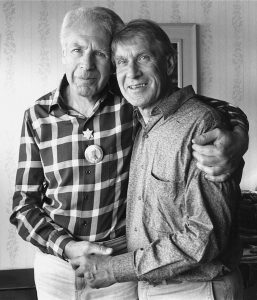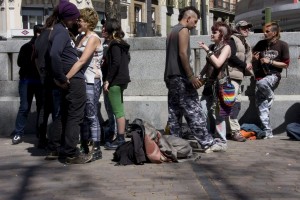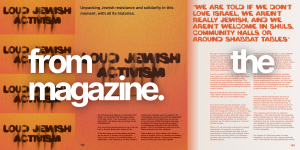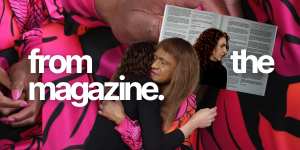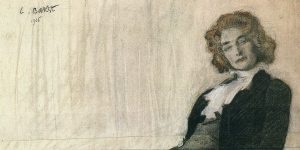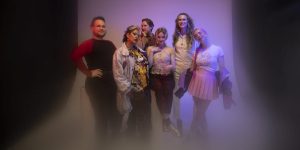Incarceration, violence and tenderness: ‘Pariah’ by Zarita Zevallos
By: Hini Hanara
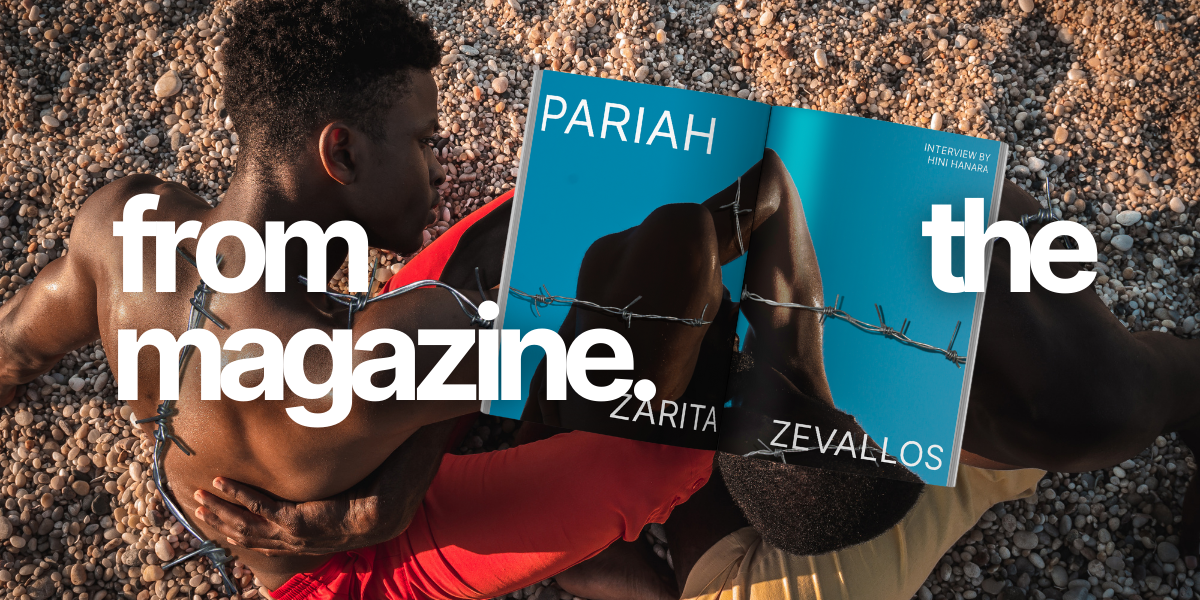
Zarita Zevallos is a Haitian photographer and architect based in Brooklyn, New York. Her work is known for hand editing and superimposing photographs of darker skinned bodies with materials such as thread, bullets, glass, barbed wire, etc. The purpose of her work is to reflect upon identity, gender roles, crimes committed by nations, non-conformism, and political or ideological authoritarianism. She enhances her concepts while allowing the observer free rein of their sub- conscious artistic impulse.
In this interview from Archer Magazine #18: the INCARCERATION issue Zarita Zevallos speaks with Hini Hanara.
All images: Zarita Zevallos
Hini: I have so many questions about your experiences growing up in Haiti. Is your narrative in Pariah a direct link to your birthplace or is there wider context?
Zarita: The photoseries Pariah is specific to formerly incarcerated people in the United States, expressing both the exploitative nature of the system, and the difficulties of surviving it after being jailed. The lack of order and justice in Haiti is much more gruesome and heartbreaking.
H: The barbed wire is such a fierce icon of imprisonment or incarceration. Can you tell me about what it symbolises for you?
Z: When I think of the idea of incarceration, the image of barbed wire comes to mind. Its use also helps to intensify the feeling of physical/ emotional pain, harm and damage inflicted on a specific group of people.
H: Even with barbed wire being so prominent, I almost feel a poetic grace displayed by the models. Was that intentional?
Z: Absolutely. During the photoshoot, it was important to have the models pose in a manner that constantly evoked tenderness and care. Black men, within and outside prison, mutually support each other. I chose to represent them in a softer light, underneath the contrasting and harsh layers of barbed wire.
H: Some of our readers may not be aware of Haiti’s colonial history, or how it’s still affecting Haitian people today. This understanding helps people like myself share their own similar experiences. Who inspires you to open up, and which other artists have helped light your path?
Z: I get this question often and, unfortunately, I don’t have an artist or known person that inspires me aside from my father, Arturo Zevallos. He is the reason I picked up a camera, as he is a photographer as well, and his conversations about philosophy with us, his children, are the foundation of my work.
He has read hundreds of books and always taught us about the effects of colonialism and propaganda in the media; that the information that is easily given to us via television and radio is not always correct. He is from Peru and has lived through the cancerous growth of imperialism in South America.
One of his favourite writers is Eduardo Galeano, who has dedicated his life to denouncing the crimes of the Western world. His knowledge and lived experiences light my creative path.
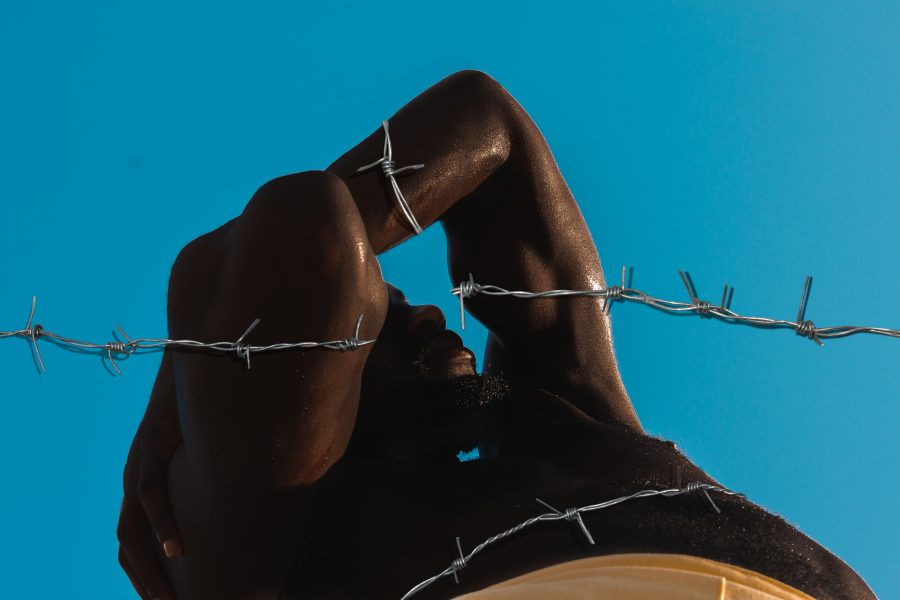

H: Aotearoa (New Zealand) is my birthplace. It was one of the many Polynesian islands that were colonised and converted to Christianity by Britain. As an Indigenous Māori person who grew up in a very staunch Christian household, I often refer to myself as “twice-colonised”, as both my land and my spiritual beliefs have been manipulated.
When I viewed the image of the two men in the water, one floating on their back and one standing, my first thought still went to baptism. I understand Haiti also has a strong religious influence. Has that played into your experience of colonialism?
Z: Thank you for making space to share this. Yes, religion is very present in the Haitian society, mindset and culture.
Even the government is Catholic. Religion also played a role in developing classism; for instance, when schools were created in Haiti, all of them were Catholic and private. If you could afford an education, you were part of the bourgeoisie.
This meant that most people who could afford it were foreigners, or native rich people who very often were light-skinned. This isolated 99 per cent of the mass population and the lower class, who found themselves rejected and ignored from opportunities.
Religion in Haiti, in my opinion, remains at the top of the pyramid of violence.
In my journey of questioning my religious upbringing, I found my personality. As I unlearned anti-blackness and anti-classism, and found my way back to humanity, I rejected the notions of the classist Haitian (anti-native) church.
I am very angry at how religious leaders get away with, quite literally, the rape of the world and hold a systematic monopoly over the human consciousness.
This will always play an important role in my journey of unlearning, because religion, as imperfect as it is, was injected into my existence at birth. It took a lifetime for me to learn this self-hate. It will take a lifetime to vomit its filth.
I also want to add that there is a difference between spirituality and religion as a system. This need/obsession to control a collective narrative that is life is not acceptable to me.


H: Did you feel safe to express yourself creatively in Haiti? How has your move to the USA changed the way you approach your art and express your beliefs?
Z: Yes, when you are part of the upper middle class and you are light-skinned, you have access to a lot of freedom of expression, which was what I belonged to when I lived in Haiti. I only realised how restricted others were when I moved to the US and began understanding my privilege.
It has been a journey of analysing my behaviours and instinctive thoughts. Having access to writing by Black authors and documentaries about neo-colonialism in the Caribbean have been helpful to see myself as I was, and to understand what I can do to denounce the separatism that we inflict on our own race and people when we assimilate the coloniser’s mentality.
H: I’m curious about your creative team and perhaps their shared lived experience. What does that conversation look like in the image- planning process?
Z: I usually reach out to two people: my sister, Alexa Zevallos, who I have been inviting on set since last year (2022) to help with directing the models; and my friend, Keylah Mellon, who is a film photographer, to look over the final product and share comments.
The conversation is mostly around aesthetic, wording of concept and the editing process/colour correction. Planning and research I tend to do on my own.
H: I understand landscape photography was a big love of yours and I feel that reflected in the models’ bodyscapes. Do you have a sense of connection to land, being from Haiti?
Z: I have an ambiguous relationship and connection with Haiti. The land itself is infinitely loved and cherished.
The native people are warm and hardworking, but my heart is angry at the country itself, run by thugs who choose to share political and financial privileges with international rulers. Recently my aunt, Gina Rolles, was framed and unjustly incarcerated without proof, while the people who are responsible roam free.
The system is so poor in Haiti that they refuse to see her to set her free. She is now depressed and has lost so much weight that she can no longer speak.
The people in the government who have jailed her are now revealed to be responsible for fraud and other heinous crimes. I do not see myself ever going back.
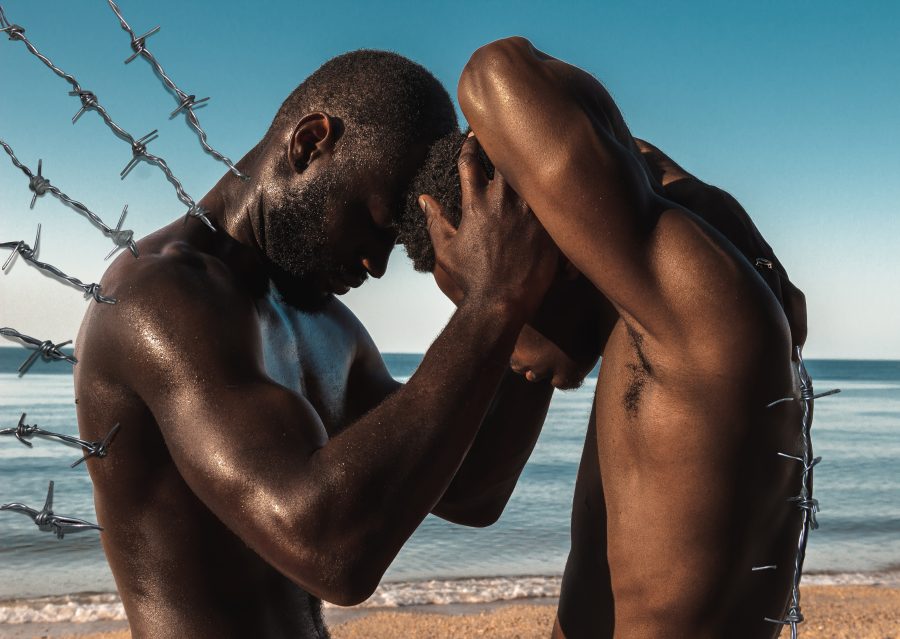
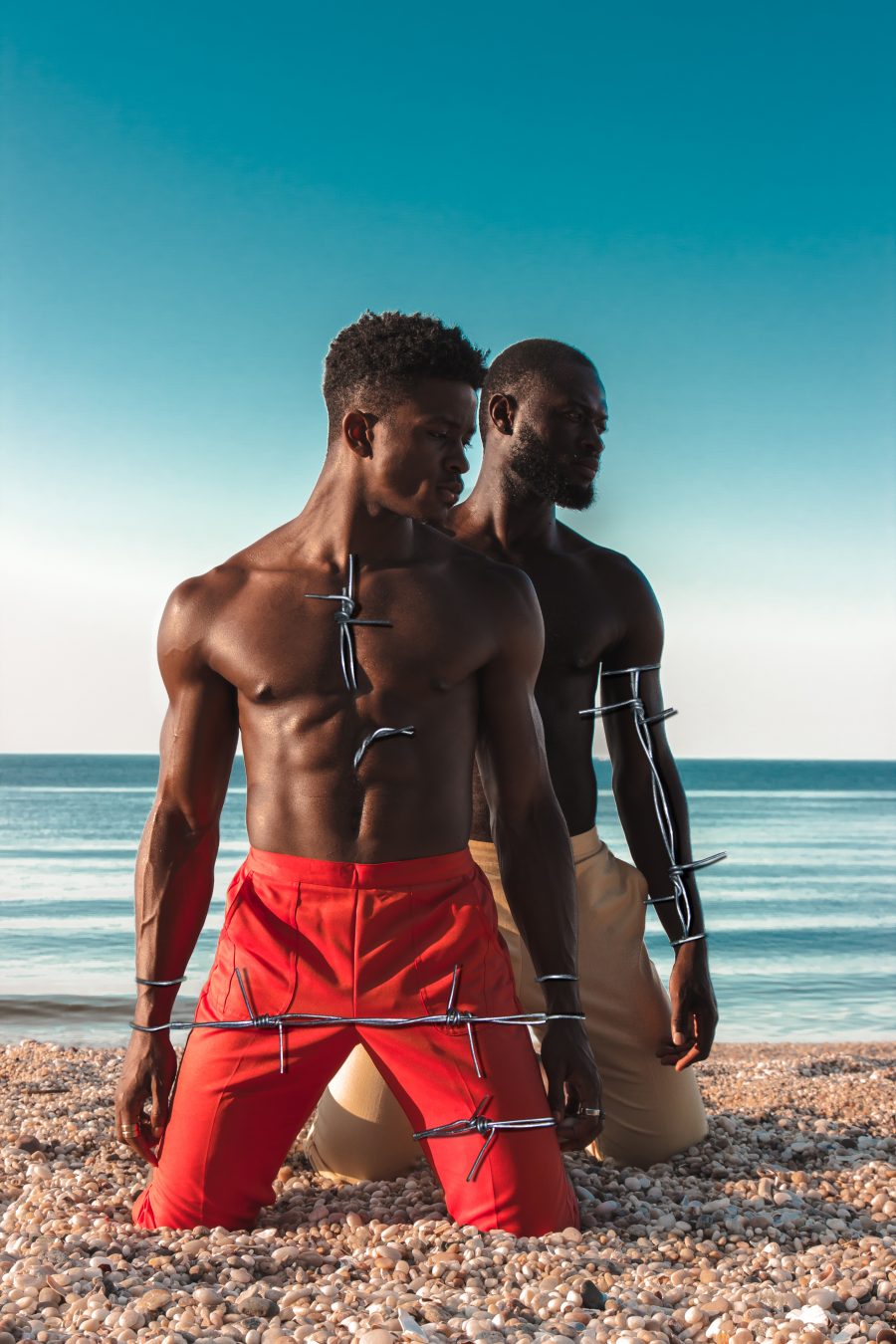
H: You’ve explored the theme of masculinity in past work. Has this played a role in Pariah?
Z: It played an underlying role here; it was not the focus of this series. The goal was tenderness. It wasn’t until after Pariah was published that I received comments from a few men expressing that this series seemed “homosexual”, simply because two men were close and touching.
It definitely caught my attention because I did not imagine that some men could be offended by the masculine touch. It’s surprising that platonic intimacy between two people causes so much uproar.
H: Do you see a resolution for the tension we see in Pariah?
Z: Yes, the mental battle people face in prison and after is torture. The racism, the physical violence, the forced labour, the reintegration with negative labels into society, the loss of rights, the high possibility of going back to jail because of how easy they make it for you to break a slight rule.
All of these things cause so much distress and limitations. If you have no support system, family or friends helping you, it’s a winning battle for the system.
INTERVIEW BY THE ARTIST
As part of the research phase for this series, the artist conducted an interview with a man, Henry, with lived experience of incarceration.
“Through talking to him, I realised that he was accepting of his fate,” says Zarita Zevallos.
“He felt the rage of the unjust treatment he received from the system, but he was still and collected. Very often, I find that as Black people, we are not allowed to outwardly express our anger and pain. It is an implosive reaction. We keep it to ourselves.”
Zarita reflects that this experience is felt through this series. “The photos represent the implosion and restriction felt as the result of a traumatic experience. You sometimes find the model in uncomfortable positions, with barbed wire over his mouth to express silent pain, or reaching out to nothing, reduced to the limits of his condition.”
Part of Zarita’s interview is included below.

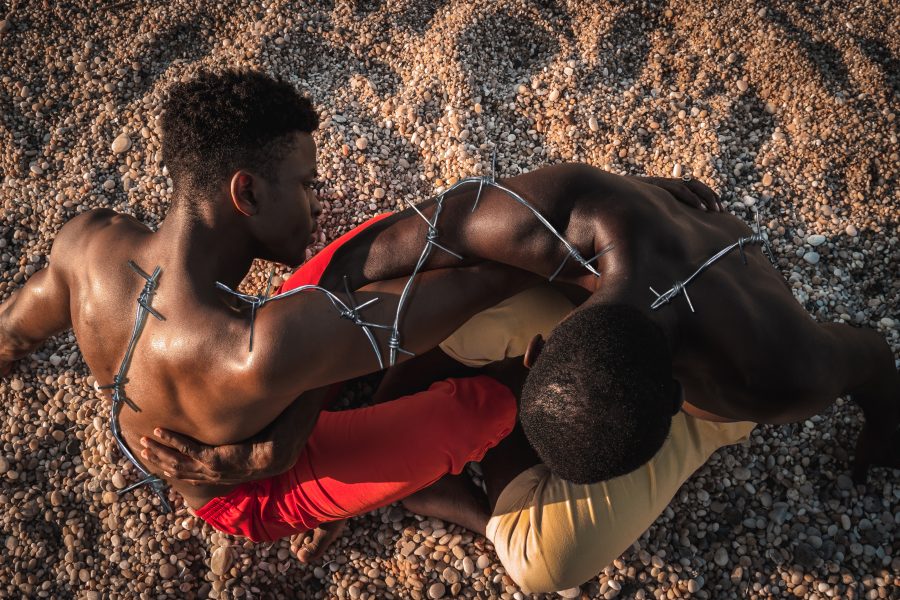
Z: After this experience, do you feel free? Do you feel fragile? What are the rights you lost?
H: You lose a lot of rights for a while. You can’t vote. If you try to look for housing, they say you can’t have a criminal case of less than five years, among other things. Getting back into society is really hard, especially when you try to get a job. They label you a lot.
In the beginning, I had to be under house arrest for six months. If I wanted to go out, I had to call [the probation officer] in advance to say at what time I’d be leaving the house and at what time I’d be coming back.
If by any bad luck you’re not back by the time you’re supposed to be, the cops will come to your house in less than two minutes and they will arrest you.
I felt scared because I had eyes on me constantly. I was very paranoid.
Z: How long do you think it took before you got used to it?
H: It took me about three and a half years. It was extremely hard, I can’t stress that enough. You have to depend on your family and friends, if they’re still there for you.
Z: Did you find work? Do you get paid properly?
H: I kept asking. I’m disabled. And finally, after three years, I got a job. Ten dollars here, 20 dollars there. Per day in prison you get paid 15 cents for hard labour. Some get paid 15 dollars a month!
Z: Did this experience affect you emotionally? Mentally?
H: I couldn’t sleep. It’s torture.
Z: Now that you are free, are there everyday tasks that trigger some emotions or flashbacks?
H: Yes. Big fights, people getting cut or stabbed… The bad things that happened [in jail], like when someone got stabbed right next to me, they all come back.
Z: Have you kept in touch with your friends and family?
H: My family supported me. They took care of me so I didn’t get depressed, and so that I try to lift myself up again. It all depends on your family and friends. A lot of guys don’t have that [support] and when they come out, they would prefer to be in prison.
This article first appeared in Archer Magazine #18: the INCARCERATION issue.



